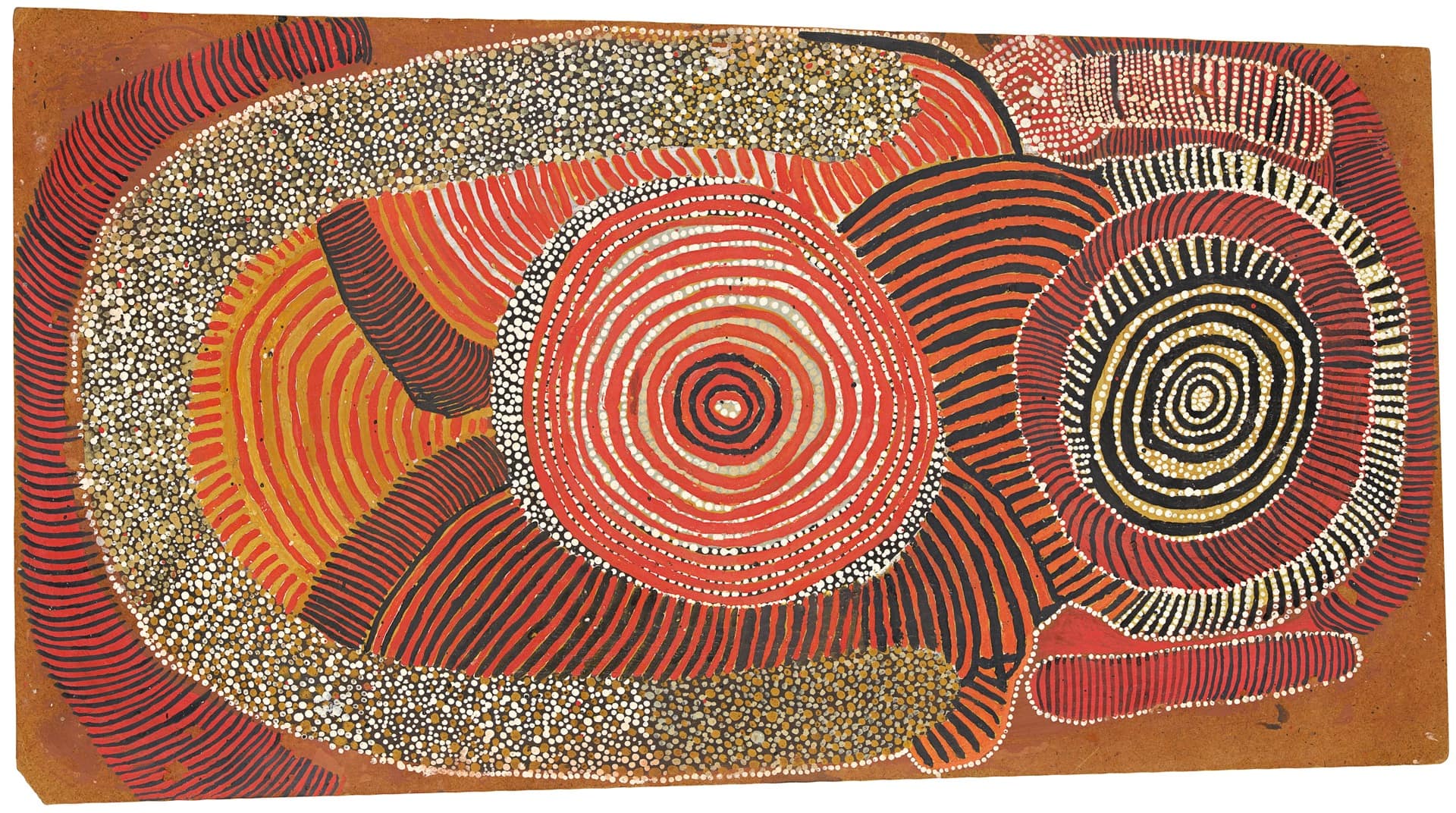Tjukurrtjanu
Origins of Western Desert Art
Free entry
Indigenous people are advised that this exhibition contains culturally sensitive works that may be considered harmful or inappropriate for viewing by women or uninitiated members of their communities. Care has been taken to respect cultural protocols and, following a comprehensive consultation process, these works will be exhibited separately for the duration of the exhibition and will not be illustrated in the exhibition catalogue or displayed on this website.
Please note that some records contain terms and annotations that reflect the period in which the item was recorded, and may be considered inappropriate today in some circumstances.
The Ian Potter Centre: NGV Australia, Fed Square
Ground Level
30 Sep 11 – 12 Feb 12
A collaboration between the National Gallery of Victoria and Museum Victoria in partnership with Papunya Tula Artists Pty Ltd
A National Gallery of Victoria Touring Exhibition
9 OCT 2012 – 20 JAN 2013
Musée du quai Branly Paris, France
This important exhibition features 200 of the first paintings produced at Papunya in 1971 to 1972 by the founding artists of the Western Desert art movement. These seminal works sparked the genesis of the Papunya Tula movement, now internationally recognised as one of the most important events in Australian art history.
The founding Papunya Tula artists drew on a rich tradition of iconographic signs and symbols to create these early works. The exhibition establishes a connection between the works of art themselves and their sources in ephemeral designs made for use in ceremony. The period from 1971 to 1972 was a critical turning point when the ancient visual language of the Western Desert was rendered permanent on sheets of composition board and thereby transformed into a rich new art form: artefact became art.
Tjukurrtjanu includes paintings, shields, spear throwers, stone knives, historical photographs, headbands and body ornaments.
